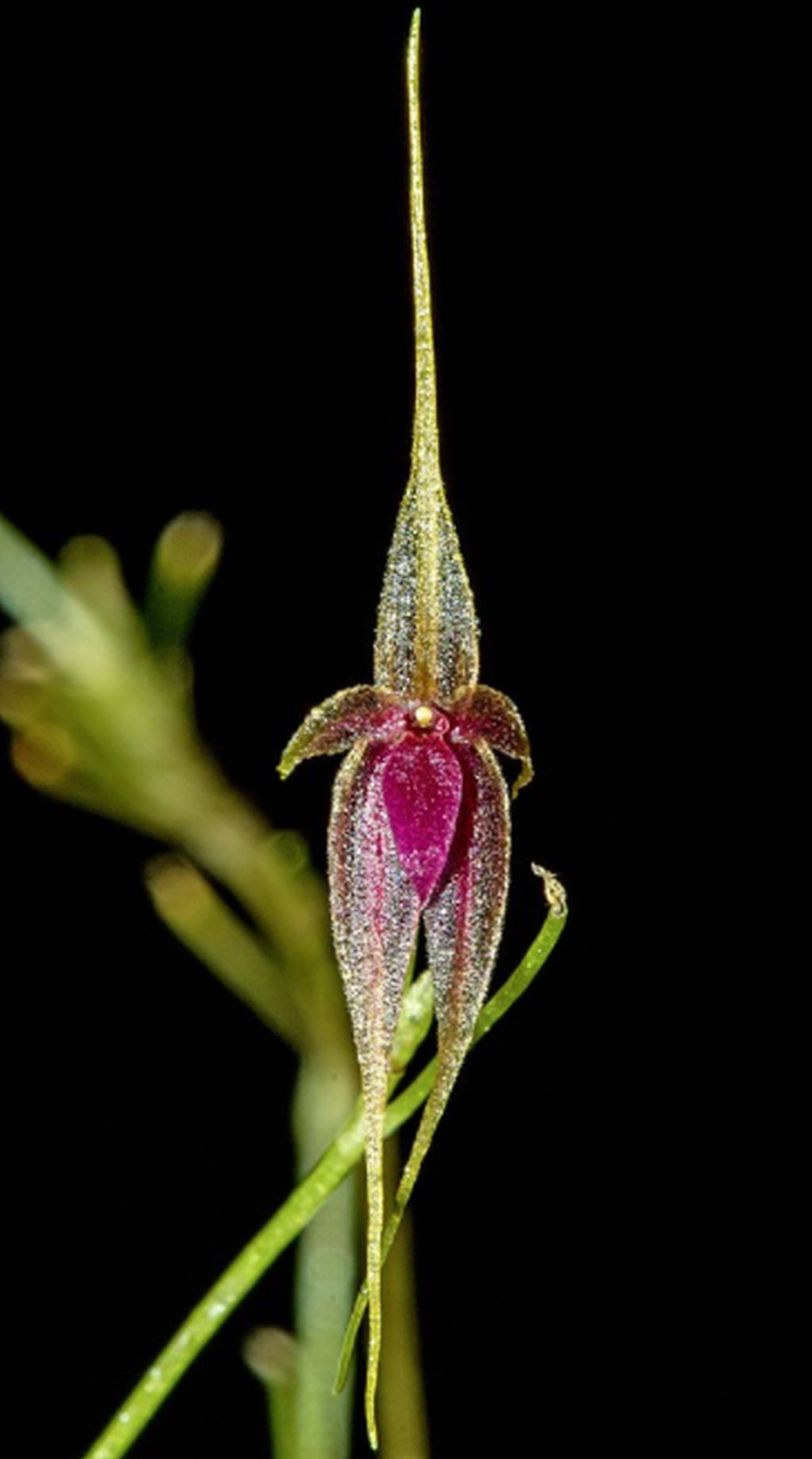

Platystele baqueroi L.Jost & Iturralde 2017
Photos by Kilian Zuchan and his Flickr Orchid Photo Website
TYPE Drawing by © Luis Baquero and Lankesteriana




Common Name Baquero's Platystele [Ecuadorian Orchidologist and discoverer of the type current]
Flower Size .4" [1 cm]
Found in Valle de Cauca Colombia and Carchi province of Ecuador in montane forests on cliffsides at elevations around 680 to 1080 meters as a mini-miniature sized, warm to cool growing, densely caespitose epiphyte with erect, slender, abbreviated ramicauls enveloped by 2 to 3 thin, ribbed, imbricating, apiculate, persistent sheaths and carrying a single, apical, erect, coriaceous, obovate, gradually narrowing below into the slender, petiolate base leaf that blooms in the fall on an erect, arising laterally from the ramicaul, peduncle filiform, .2" [5 mm] long, raceme to .4" [1 cm] long, successively single, many flowered inflorescence with thin, imbricating, apiculate, as long as to shorter than the pedicel floral bracts.
"The new species is similar to P. caudatisepala, which occurs from Mexico to Ecuador at similar elevations; the discoverer Luis Baquero reports that P. caudatisepala is present in the same area as P. baqueroi. As in P. caudatisepala, the dorsal sepal varies greatly in length from flower to flower, and the margins of the floral parts have conspicuous clavate cilia. The most obvious difference between P. baqueroi and P. caudatisepala is that the formerís lateral sepals are connate for .08" [2 mm] while the latterís sepals are free to the base. The petals of P. baqueroi are usually strongly reflexed, as are the outer margins of the sepals. The lip is thick in the middle, thin at the edges, and the upper (adaxial) surface is strongly convex, unlike the planar lip of P. caudatisepala. The leaves of P. baqueroi are petiolate versus subpetiolate in P. caudatisepala. Another similar Platystele with long sepaline tails is P. posadarum Luer & Escobar from Colombia (Luer 1990). Platystele baqueroi differ from P. posadarum in having lateral sepals connate for .08" [2 mm] versus free to near the base in P. posadarum, smaller more narrow petals than P. posadarum .16 x .028" [4 mm ◊ 0.7 mm] versus .24 x .92" [6 mm ◊ 2.3 mm], front surface of the lip featureless versus sulcate in P. posadarum, and tip of lip apiculate and deflexed versus obtuse in P. posadarum. Platystele speckmaieri Luer & Sijm is also superficially similar with its long-attenuate sepals. However, its sepals are free and spreading, its petals are also spreading, the lip is sulcate, contracted above the middle, narrowly obtuse at apex , and the peduncle of the inflorescence is up to 2.4" [60 mm] long versus .2" [5mm] in P. baqueroi." Baquero & Zuchan 2017
Synonyms
References W3 Tropicos, Kew Monocot list , IPNI ; * LANKESTERIANA 17(1): 55 Jost & Iturralde 2017 photo/drawing fide; Orquideas de Farallones de Cali Galindo-Tarazona, Haelterman, Zuluaga Trochez and Sebastian Moreno 2020 photo fide; Platystele finleyae, Pleurothallidinae, A New Species From Northwesten Ecuador Monteros, Restrepo and Baquero 2022 photo fide
--------------------------------------------------------------------------------------------------------------------------